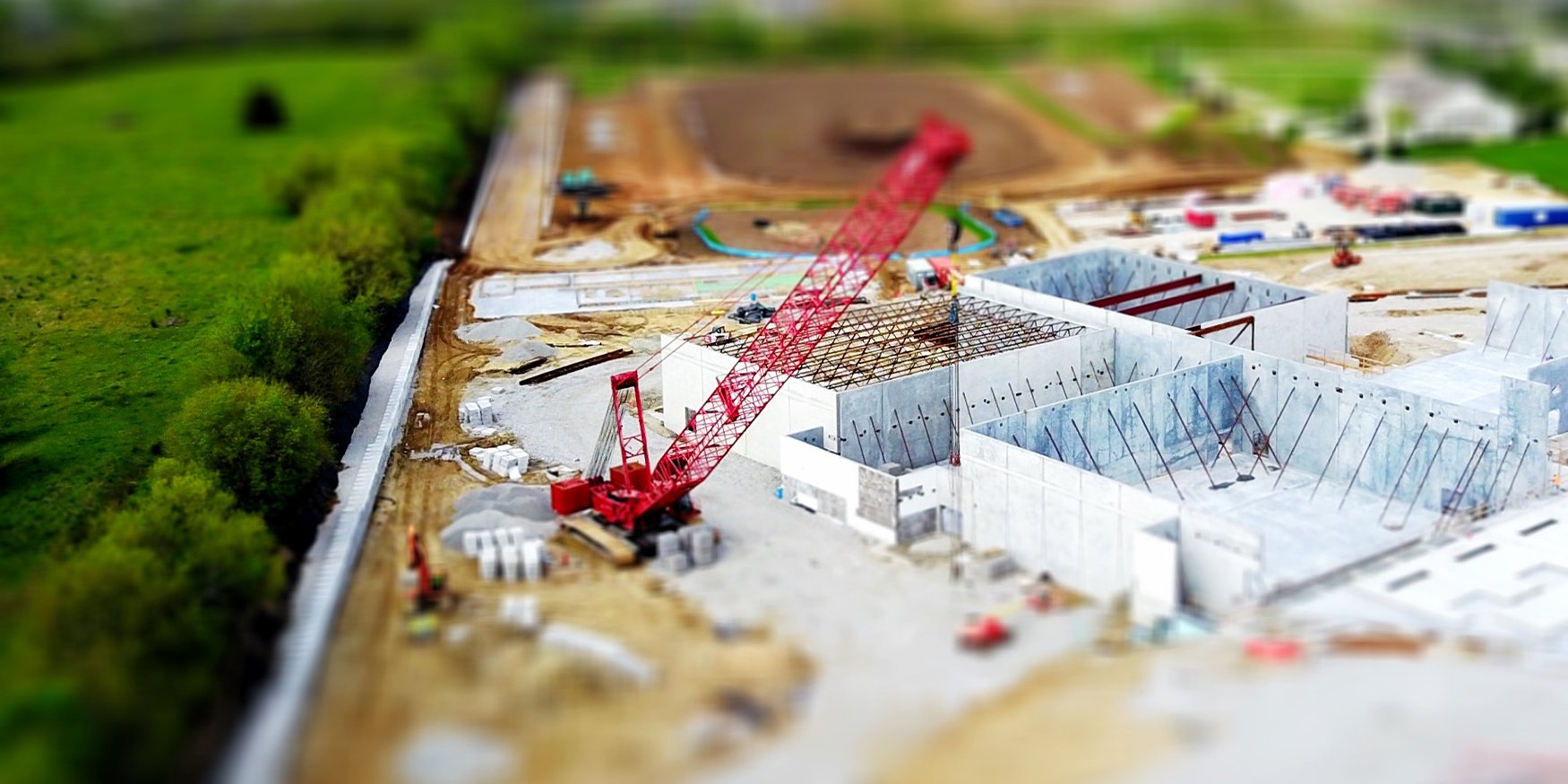The construction & energy sectors are fast moving and unforgiving, staying ahead of the curve is paramount for success. As the industry undergoes continuous transformation, it is crucial to navigate the future by identifying key trends and understanding the challenges. In this blog post, we will explore the shift in the energy landscape with examples and case studies. Then we will jump into digital transformation and industry research into some of the most significant trends you can employ to stay competitive and thrive in the evolving landscape.
Shifting Energy Landscape
The global energy landscape is experiencing a significant transformation as the industry embraces cleaner and more sustainable sources of energy. While oil and gas continue to play a crucial role in meeting energy demands, there is a growing recognition of the need to diversify our energy mix and reduce environmental impacts. This shift presents new opportunities for construction and energy companies to adapt and thrive in a changing market.
In Canada, for instance, the government has set ambitious goals to achieve net-zero emissions by 2050. This commitment has led to increased investment and support for renewable energy projects, such as wind farms and solar installations, across the country. The United States has also seen a surge in renewable energy initiatives, with several states setting renewable energy targets and implementing policies to support their achievement.
Case studies showcasing successful transitions within the industry can help demonstrate the viability and benefits of embracing clean energy. TC Energy is a leading example of how traditional energy companies can adapt to the changing energy landscape. Their portfolio includes investments in seven power generation facilities, with a combined generating capacity of approximately 4,200 megawatts (MW) – enough to power more than 4 million homes. What's impressive is that roughly 75 percent of their power capacity is emission-less, showcasing their commitment to sustainable energy solutions.
In addition to its investment in power generation facilities, TC Energy is actively involved in exploring and developing hydrogen solutions. They recognize hydrogen as a key component of the clean energy future and are leveraging their existing infrastructure and expertise to advance its production, transportation, and utilization. They are exploring opportunities to produce hydrogen through various methods, such as steam methane reforming (SMR) with carbon capture and storage (CCS), electrolysis, and other emerging technologies. This underscores their commitment to finding cleaner ways of hydrogen production.
They are assessing the compatibility of their existing pipeline infrastructure for hydrogen transportation and working on pilot projects to ensure the safe and efficient movement of hydrogen. They are actively engaged in promoting the utilization of hydrogen in various sectors, such as transportation, industrial processes, and power generation. By collaborating with industry partners, they are working to support the adoption of hydrogen as a low-carbon alternative and contribute to the decarbonization of different industries.
Suncor Energy is another great example of how energy companies can adapt and thrive in the shifting energy landscape by undertaking significant initiatives aligned with sustainability and innovation. Suncor Energy has made substantial investments in sustainable energy development, focusing on diversifying its energy portfolio. By expanding its renewable energy projects, such as the Forty Mile Wind Power Project in Alberta, Suncor Energy demonstrates a proactive commitment to incorporating cleaner and renewable energy sources. These investments not only contribute to reducing greenhouse gas emissions but also showcase their dedication to the long-term sustainability of the energy sector.
Initiatives like the Alberta Petrochemicals Incentive Program (APIP) have been introduced to support the development of petrochemical projects, encouraging a transition towards lower-emission value-added products. This approach aligns with the industry's goals of reducing environmental impacts while maintaining economic growth and job creation.
Canada has been actively developing LNG export facilities to tap into global markets for natural gas. The LNG Canada project in Kitimat, British Columbia, is a prominent case study in this regard. The project involves the construction of a large-scale LNG facility that will liquefy and export natural gas produced in Western Canada. LNG Canada highlights the economic opportunities associated with natural gas exports and its potential to contribute to the global transition towards cleaner energy sources.
On the construction side, the shift towards renewable energy sources has led to the construction of large-scale renewable energy infrastructure projects. An exemplary case study is the Ivanpah Solar Power Facility in California's Mojave Desert. This concentrated solar power plant utilizes thousands of mirrors to focus sunlight onto solar receivers, generating clean energy. The project demonstrates the construction industry's capability to develop and implement innovative renewable energy solutions on a significant scale.
It's important to emphasize that while the energy landscape is evolving, the demand for oil and gas will continue for the foreseeable future. Traditional energy sources will still play a vital role in meeting global energy needs, especially in sectors where alternative options are limited. By adapting to the shifting energy landscape, construction and energy employees can leverage their experience and expertise to contribute to a more sustainable future.
Digital Transformation
The construction and energy industry is currently experiencing a digital revolution fueled by technological advancements and data analytics. This transformative wave of digital solutions is reshaping operations, optimizing efficiency, and empowering better decision-making processes. An estimation by McKinsey suggests that the implementation of digital technologies holds the potential to unlock operational efficiencies worth a staggering $200 billion in the upstream oil and gas sector alone. Furthermore, a survey conducted by Deloitte reveals that an overwhelming 94% of oil and gas executives acknowledge the disruptive impact of digital technologies on their industry.
A study by the World Economic Forum found that the adoption of new technologies could create up to 21 million new jobs in the energy sector by 2030.
A report by the Boston Consulting Group found that the adoption of new technologies could save the heavy construction industry up to $100 billion per year by 2025.
These stats show that the adoption of new technologies has the potential to significantly impact the heavy construction and energy industries. Companies that embrace technology are well-positioned to succeed in the years to come.
McKinsey's report on Tech-enabled transformation emphasizes that in order to thrive in this new era, industrial companies must wholeheartedly embrace technology. They need to proactively invest in new technologies, cultivate new capabilities, and adapt their operating models. There are numerous avenues through which industrial companies can leverage technology to transform their businesses. This includes enhancing operational efficiency, fostering the development of innovative products and services, and creating entirely new business models. The advantages offered by technology-enabled transformation can be truly significant. Industrial companies that successfully navigate this transformational journey can substantially improve their profitability, expand their market share, and enhance their overall competitiveness.
The heavy construction and energy industries are undergoing a major transformation driven by the adoption of new technologies. These technologies are enabling companies to improve their operations, products, and services in a number of ways.
For example, the use of drones is revolutionizing the way that heavy construction companies survey and map sites. Drones can fly over large areas quickly and easily, collecting data that would be difficult or impossible to collect using traditional methods. This data can then be used to create 3D models of the site, which can be used to plan and execute construction projects more efficiently. In 2016, Bechtel used drones to survey a site for a new power plant in the Philippines. The drones were able to collect data that would have taken weeks to collect using traditional methods. This data was used to create a 3D model of the site, which was used to plan and execute the construction project more efficiently.
Another example of how technology is transforming the heavy construction industry is the use of augmented reality (AR). AR is a technology that overlays digital information onto a user's view of the real world. This can be used to provide workers with real-time instructions and guidance, helping them to work more safely and efficiently. In 2017, Shell used augmented reality to help workers install pipelines. The AR system overlaid digital instructions and guidance onto the workers' view of the real world. This helped the workers to work more safely and efficiently.
The energy industry is also being transformed by technology. For example, the use of smart meters is enabling utilities to collect data on energy usage in real-time. This data can then be used to optimize energy delivery and help customers save money. In 2018, Duke Energy used smart meters to collect data on energy usage in real-time. The data was used to optimize energy delivery and help customers save money.
Field Operations Management (FOM) is a valuable combination of processes and technologies designed to assist companies in effectively planning, executing, and monitoring their field operations. It finds relevance across various industries, particularly heavy construction and energy, offering improvements in efficiency, safety, and compliance.
Using FOM in heavy construction and energy sectors yields numerous benefits. Some of the key advantages include:
- Improved Efficiency: FOM streamlines processes, minimizes wastage, and optimizes resource allocation, leading to enhanced operational efficiency for companies.
- Increased Safety: By providing real-time information and insights, FOM empowers workers with valuable tools to ensure their safety. Additionally, automating tasks that may pose risks to human
- workers contributes to a safer working environment.
- Enhanced Compliance: FOM acts as a central repository for crucial data, aiding companies in complying with regulations. Moreover, by automating tasks mandated by regulations, FOM supports adherence to compliance requirements.
By harnessing the capabilities of FOM, heavy construction and energy companies can experience significant improvements in operational efficiency, worker safety, and regulatory compliance. There are a number of case studies that demonstrate the benefits of using FOM for heavy construction and energy companies. A study by McKinsey found that companies that use FOM can improve their productivity by up to 20%.
According to the Gartner Group's 2019 report, "The Future of Field Service Management," field service management software offers several safety-related benefits for companies. The key points from the study are as follows:
Safety Improvement: Companies using field service management software can enhance safety by up to 10% through various means:
- Reducing the risk of human error.
- Improving communication and collaboration between field technicians and back-office staff.
- Providing real-time visibility into field operations.
- Automating tasks and processes.
- Enabling proactive safety measures.
Efficiency and Productivity: Field service management software also improves efficiency and productivity, leading to further safety enhancements. By automating tasks and processes, technicians have more time to focus on important responsibilities, such as safety measures.
The study serves as a valuable resource for businesses considering the implementation of field service management software, providing concrete evidence of the advantages it brings.
In Summary
The heavy construction and energy industries are facing significant changes in the shifting energy landscape and the digital revolution. Adapting to these trends is crucial for companies to remain competitive and thrive in the evolving market.
The global energy landscape is transitioning towards cleaner and more sustainable sources, presenting opportunities for companies to embrace renewable energy projects and contribute to reducing environmental impacts. Examples such as TC Energy and Suncor Energy demonstrate successful transitions by investing in sustainable energy development and diversifying their energy portfolios.
Digital transformation is revolutionizing operations in the construction and energy industries. Embracing new technologies can unlock operational efficiencies, improve safety, and enhance decision-making processes. The adoption of drones, augmented reality, smart meters, and field service management software are just a few examples of how technology is transforming these industries.
Field Operations Management (FOM) is a valuable tool for heavy construction and energy companies, offering improved efficiency, increased safety, and enhanced compliance. Companies that implement FOM can benefit from streamlined processes, real-time information, task automation, and proactive safety measures.
The studies by McKinsey, Gartner Group, and the Boston Consulting Group provide concrete evidence of the benefits of digital technologies and field service management software. These resources serve as valuable references for companies looking to navigate the future successfully and leverage technology to drive innovation, sustainability, and competitiveness.
By embracing clean energy opportunities, adopting new technologies, and supporting employees through education and training, construction and energy companies can position themselves as leaders in the changing industry. Together, we can build a more sustainable and resilient energy sector for future generations.




.png?width=150&name=aimsio-white-430x88%20(1).png)
Submit a Comment